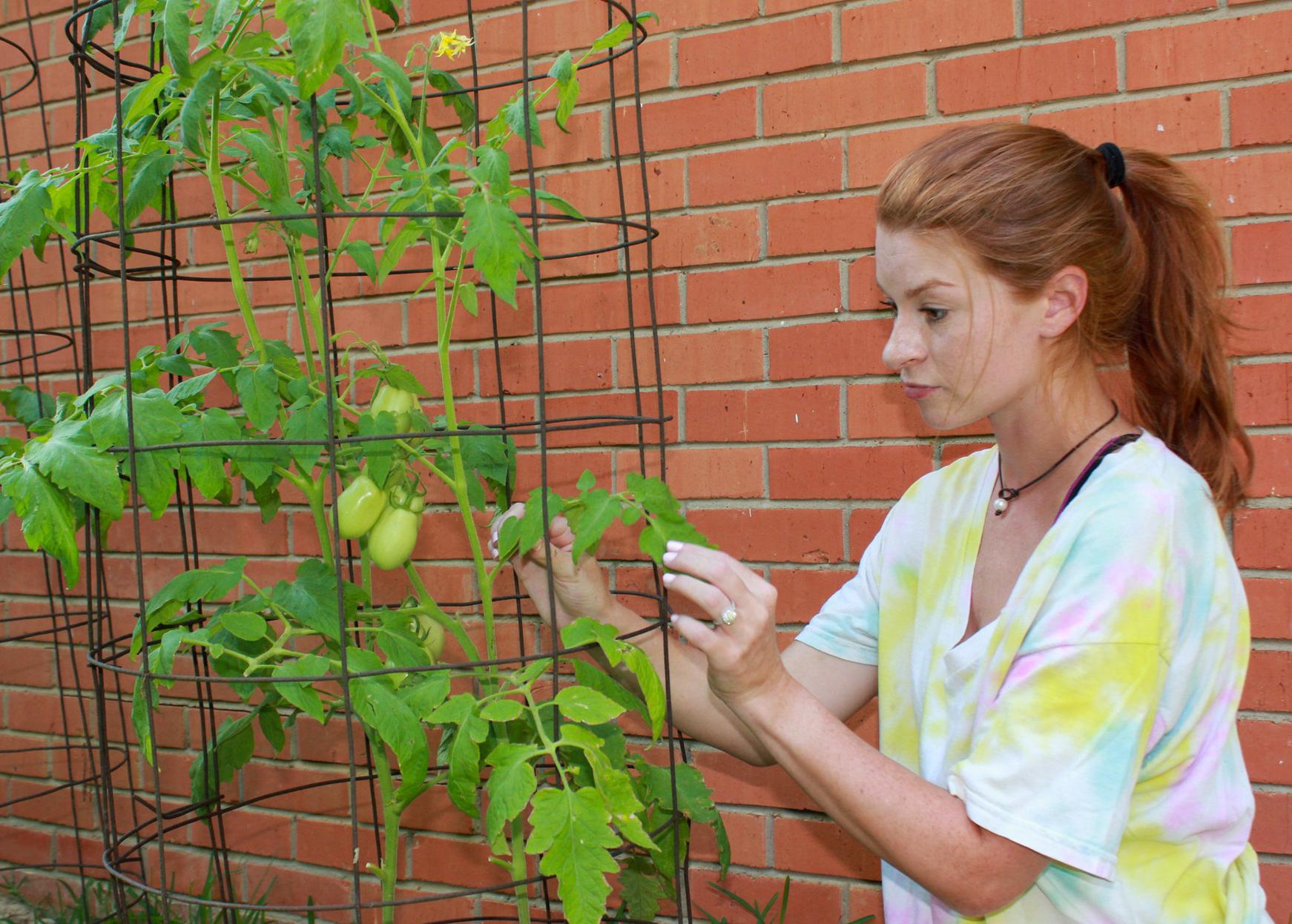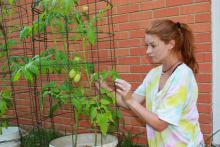Information Possibly Outdated
The information presented on this page was originally released on June 19, 2020. It may not be outdated, but please search our site for more current information. If you plan to quote or reference this information in a publication, please check with the Extension specialist or author before proceeding.
Easy home tank mix aids tomato gardens
STARKVILLE, Miss. -- Successful Mississippi gardens are filling up with beautiful tomatoes, but unless gardeners stay alert and act, these plants can succumb to summer insect pests and diseases.
Blake Layton, an entomologist with the Mississippi State University Extension Service, is also a gardener, and he offered tips on keeping tomato plants healthy and producing fruit. His first tip is to multitask.
“There’s not much point in spraying for insects without spraying for diseases as well,” Layton said.
Layton recommends gardeners use a mix of three common chemicals -- permethrin, chlorothalonil and copper octanoate -- to spray on tomato plants starting one to two weeks after transplanting and continuing every seven to 10 days through the season.
“Products containing these ingredients are readily available at local seed and feed stores,” Layton said. “Read labels carefully to be sure the product you buy is labeled for tomatoes, and mix and apply according the label directions.”
Mix these ingredients with water in a hand pump sprayer, and apply to vegetable gardens. Tomatoes are primarily wind-pollinated, but bees do visit tomato blooms. Spray as late in the day as possible to protect pollinators, as bee activity usually declines near dusk.
“These active ingredients are all in products that can be purchased from local lawn and garden centers in small, home-garden-sized containers,” Layton said. “All three products are tank mixed according to label directions and applied as a single spray, taking care to get thorough spray coverage of the entire plant, especially the undersides of leaves.”
Layton said permethrin controls fruitworms, hornworms, stink bugs and leaf-footed bugs, while the other products are for disease control.
Each of these ingredients has a zero-day preharvest interval, but Layton suggested allowing a couple of days to pass before resuming harvest.
“Pick first, spray later that day, wait two to three days before picking again, and wash or peel fruit before eating,” Layton said. “As long as I maintain this spray schedule, we enjoy good insect and disease control. Once I start missing a few sprays, pest problems increase and fruit quality declines drastically.”
While these are good and effective chemicals to use on garden plants, Layton said it is wise to alternate the products used to maintain effective disease and insect control. This practice helps prevent the development of resistance.
“Mancozeb is a good alternative for chlorothalonil, but because it has a 5-day preharvest interval, it is best used in early season,” he said. “If caterpillar pests are your only insect concern, Spinosad is an effective alternative for permethrin, but Spinosad does not control stink bugs and is best used in early season when stink bugs numbers are low.”
Rick Snyder, MSU Extension vegetable specialist working from the Truck Crops Branch Experiment Station in Crystal Springs, said one of the most common diseases on tomatoes is early blight.
“Look for brown spots on lower leaves that have concentric rings in them,” Snyder said. “As it progresses, lower leaves turn yellow and eventually fall off. Left unchecked, it will move up the plant with spots, yellowing and leaf drop.”
Blackened areas at or near the bottom of the fruit are most likely blossom-end rot. While not a disease, this problem can ruin fruit. The solution is to make sure plants get enough calcium and never let them dry out between waterings. Mulch helps with water retention.
“Wilted plants can be caused by a number of diseases, but first make sure plants are getting enough water,” Snyder said. “Garden vegetables need an inch to an inch and a half of water each week, whether from the hose or natural rainfall.”
When wilt is not caused by a lack of water, it can indicate Southern blight, bacterial wilt, tomato spotted wilt virus or several other diseases.
For those interested in gardening organically, there are several organic fungicide products. Organic insecticides that contain Spinosad do a great job controlling fruitworms and hornworms, but there are no effective organic options for controlling stink bugs or leaf-footed bugs, other than hand-removing the pests.
The MSU Extension Services offers information at http://extension.msstate.edu/publications. Search for Extension Publication 2347, “Insect Pests of the Home Vegetable Garden,” or Extension Publication 3175, “Common Diseases of Tomatoes.”









